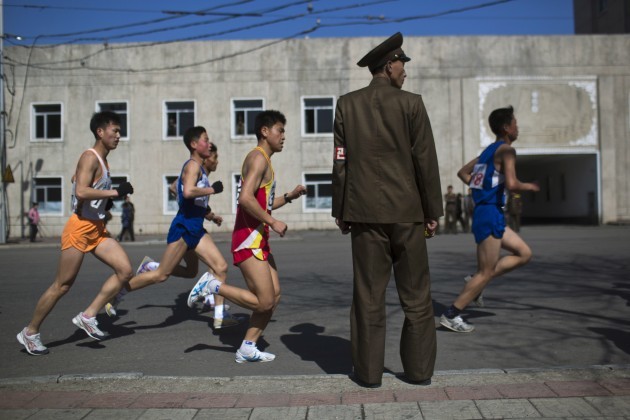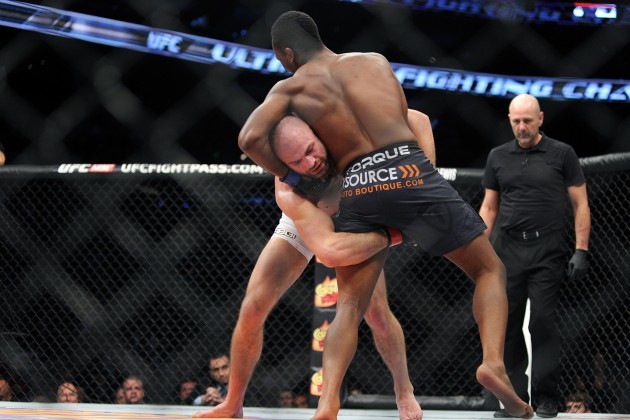1. To be honest, I never really considered becoming a journalist. It just seemed like a bit of a laugh. But when I was at university there was a lad in the year above, a guy called Simon Hooper and he started doing some stuff for Match of the Day magazine. They started giving me freelance work as well and it went from there. I moved to London in 1999, signed up for a three month journalism course and that was a waste of time. I gave myself a fortnight to apply for jobs and then I was going to have to start doing temp work.
On the Thursday of the second week, I went for a meal with some friends and one of them brought along her new boyfriend, an internet millionaire. That sort of thing happened a lot in 1999. He pointed me towards OneFootball, which was recruiting. I emailed on the Friday, interviewed on the Monday and started on the Tuesday. I was very fortunate.
Jonathan Wilson told The Set Pieces how he made a career in journalism.
2. Christy Mack looks at her face sometimes — the new one — and tries to decide if she likes it better than her old one. There are differences.
Her bright eyes used to be slightly more expressive. But the way her muscles healed after the attack, she now needs glasses. “It’s OK,” she says. “They’re cute.”
Her mouth has a different shape after so many teeth were broken. She has veneers, but they are uneven, a stopgap measure so she can eat normally. She won’t smile for photos until she gets them fixed again.
ESPN’s Jane McManus tells the tragic love story of Christy Mack and the UFC’s Jon “War Machine” Koppenhaver
3. In many respects, Aldo ‘Buff’ Donelli had the best of both worlds.
He not only was a football hero, but the Morgan, Pennsylvania native turned out to be a futbol hero as well.
He starred at college football and became the only person to coach at the collegiate and professional levels at the same time. He also turned in one of the most scintillating performances in US national team history before there was much of a history to write home about.
Michael Lewis tells Guardian readers about the extraordinary tale of Aldo ‘Buff’ Donelli
4. By the 1980s, a late night under the bright lights of Las Vegas Boulevard was top of every boxer’s bucket list and the Clones Cyclone was no different. His reality, however, a smouldering summer evening under a merciless sun in a Nevada desert carpark, was more nightmarish incubus than fulfilling dream.
The Strip was suffering from heatstroke and as the interminable ring introductions began, the official diagnosis declared a fever of 43C. Air conditioning units overhead and a bank of cooling misting fans would have been nice, but instead a canvas canopy was hung to trap the sun’s punishing heat which was in turn intensified by the blaze of 74 television lights surrounding the squared circle. A brisk night in the Ulster Hall or Loftus Road it was most certainly not.
Speaking of The Guardian, Paul Gibson makes a case for Barry McGuigan’s place in the great rounds in boxing history.
5. Beltran was next to me and there were thousands of screaming fans inside the Bren Events Center. But really, it was just me and the fighters. And I was the one — or at least one of the ones — deciding who would be the winner based solely on my observations in real time.
That’s a massive responsibility and a daunting feeling. You miss something in a close round and that could be the difference of five figures for a fighter.
It might look easy sitting at home watching on Spike TV or FOX Sports 1 or pay-per-view. It’s not. It’s easier to screw up than you think. Believe me, I did it.
If you’ve ever wondered what it’s like to be an MMA judge, Marc Raimondi tried his hand at it for MMA Fighting.
6. In a park in Moston, one of the less visited byways of north Manchester, looking out across the valley to the glittering lights of Oldham, the country’s newest football stadium is nearing completion. The site is alive with construction workers in hard hats, fixing and clearing. Gardeners dig and plant. The groundsman’s lawnmower buzzes.
There is urgency about the place, the timetable is tight. They want to get everything ready to open up in time for a very important anniversary. Luckily the expansive new bar in the main stand is already in full working order. When it does finally open, there will be many in the game well beyond Manchester anxious to toast this place’s construction.
How FC United rose to the brink of the big time by Jim White for The Telegraph
7. Keen to beat the half-time rush down the always-congested rear corridor, I headed to the halfway-line huts that housed the toilets. Then, wanting to see the girl in the old snack bar where we used to sit, I headed not to the nearest snack bar, but to the far one, where a uniformed off-duty fireman was being served.
Walking back up the corridor with my can of Coke the two pretty girls from the row in front were walking towards me, trying to deal with their brother, who was zigzagging his way down the tight passageway. They smiled as I stood in a turnstile to let them pass.
It was the last moment of normality I can remember.
Martin Fletcher recalls in detail the events of 11 May 1985, when 56 people lost their lives in the Bradford City fire, including four members of his family in The Guardian
8. By 8:30 a.m. Sunday, the 50,000 seats in Kim Il-sung Stadium were nearly filled with men in Mao suits and coats and ties, women in dresses and heels, and soldiers in olive-drab hats with crowns as wide as a discus.
Students carried paper megaphones and silver wooden clappers that flashed like flag semaphores and magnified the rhythmic applause, a sound of both welcoming and required exuberance.
In the hazy chill, I stood on the track with about 650 runners from about 30 countries who had come to challenge their preconceptions as well as their endurance.
Jeré Longman ran a Marathon in North Korea for The New York Times so you don’t have to.


